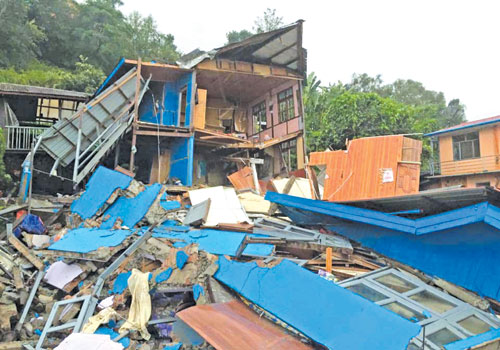Landslides hit Mizoram State
Friday, 28 August 2015 01:08 Written by Thawng Zel Thang ([email protected]) 28 August 2015 — Landslides, believed to have been triggered by heavy rains starting yesterday, have destroyed houses and graves in Mizoram State, India. Aizawl, the State’s capital, has been affected, with about 160 tombs in three different cemeteries destroyed, according to the Indian

